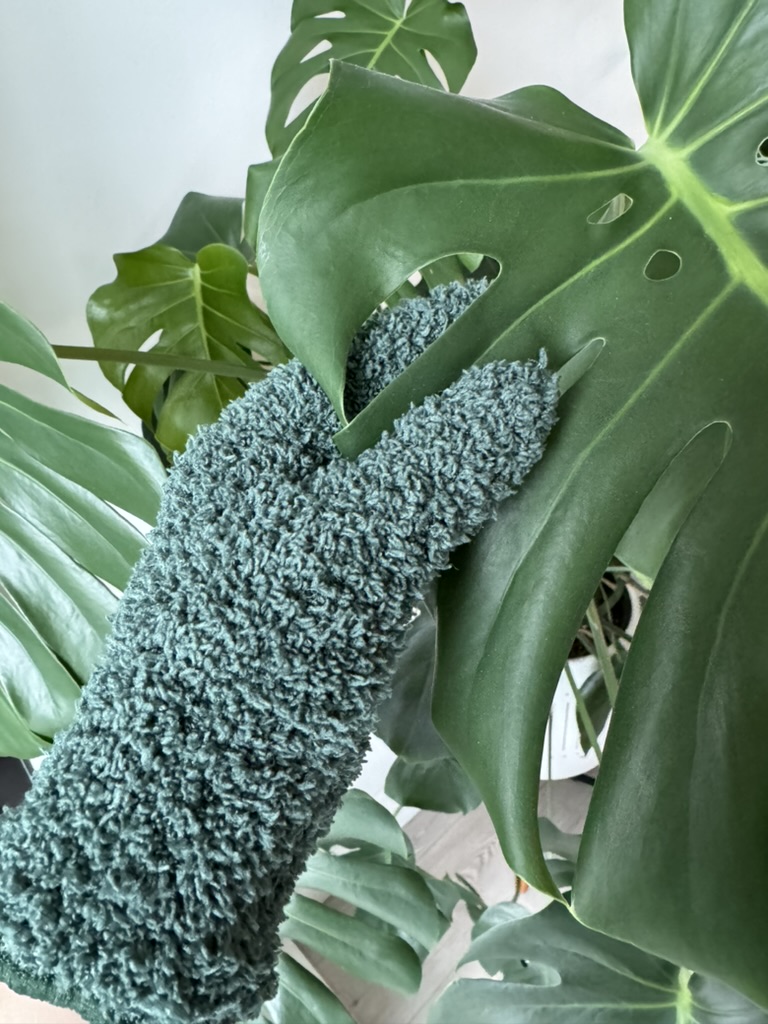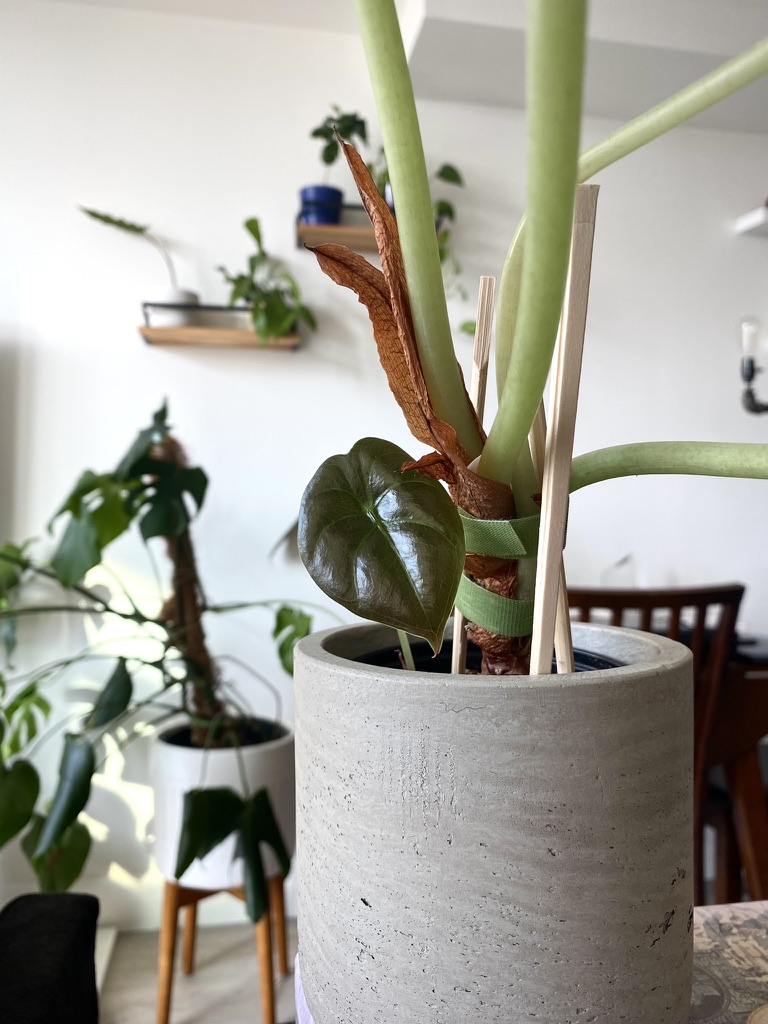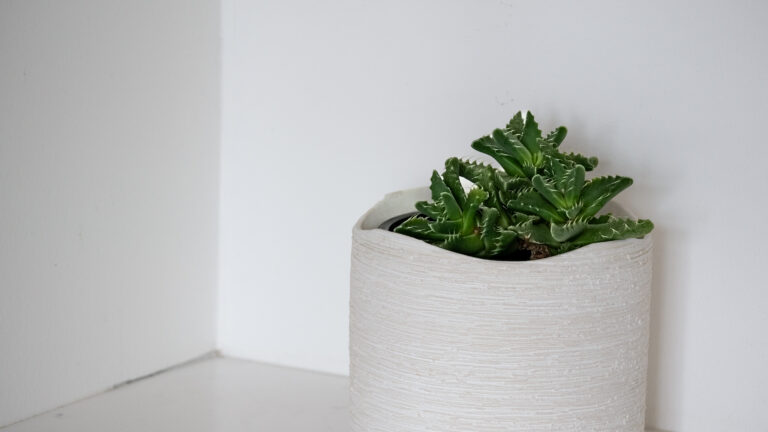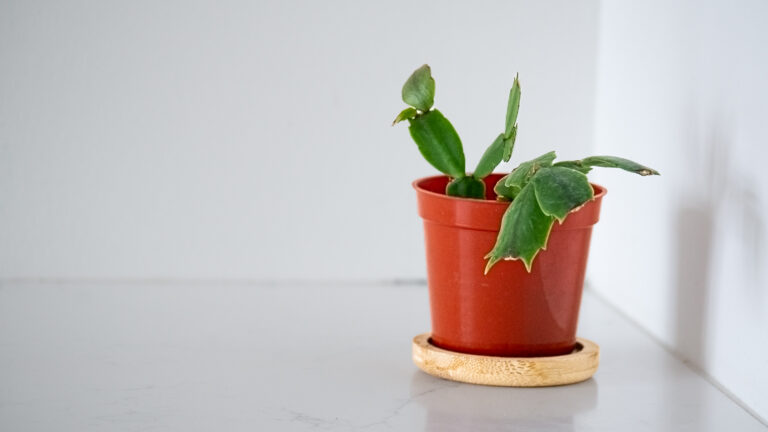Croton Petra or Codiaeum variegatum ‘Petra’ is a member of the Euphorbiaceae family. It is native to the Western Pacific region (Malayasia, Indonesia).
Croton plants have been cultivated for centuries for their striking foliage.
There are around 7,500-8,000 species of the Euphorbiaceae.
🪴 Appearance of Croton Petra
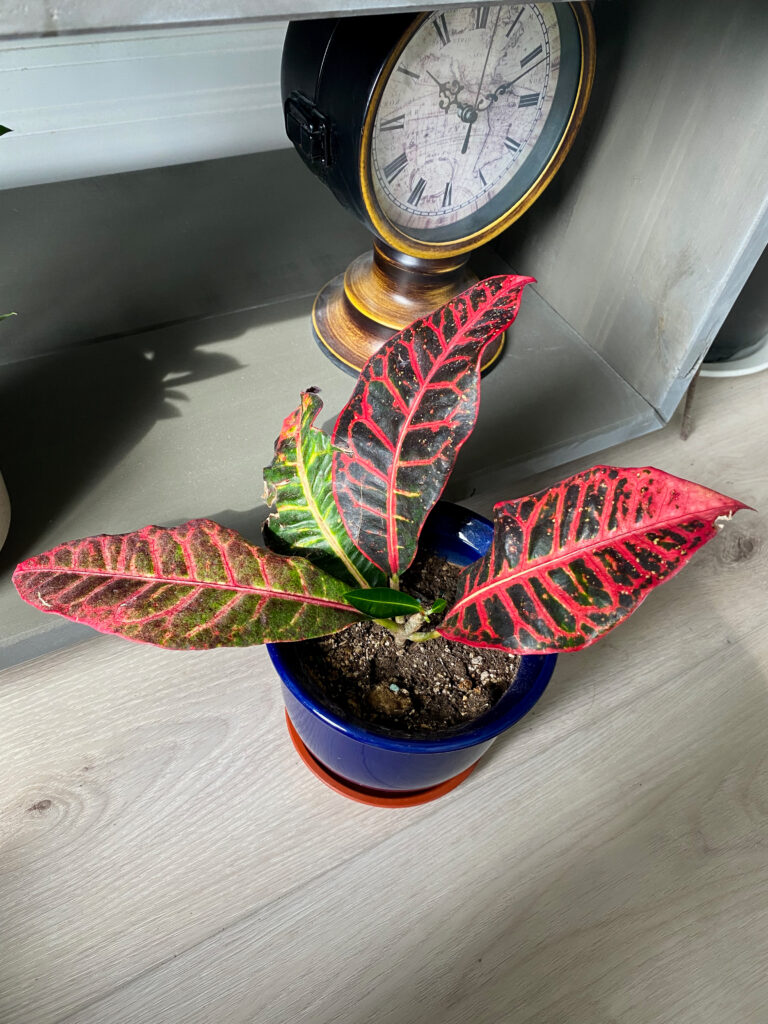
The Croton Petra has a vibrant array of colourful, variegated leaves. This plant often has a mix of colours including green, yellow, orange and red. The leaves are positioned spirally along the stems and shaped like elongated ovals. The foliage is glossy and leathery to touch.
☀️ What Light Does Croton Petra Cactus Need?
Croton Petra is a tropical plant and thrives in bright, medium-bright light. They prefer to see the sun for the majority of the day.
While Croton Petra can handle indirect light, it will lose most of its colouring.
🌡️ What Temperature and Humidity do Croton Petra Like? 🌫️
Croton Petra prefers a temperature between 15 to 27 degrees celsius. They cannot tolerate colder temperatures.
They also prefer higher humidity. Since they come from tropical environments, they prefer moist air (60-80%), and do well in average household humidity levels (40-60%). Croton Petra prefer to be close to your humidifier (I use the Levoit Hybrid Ultrasonic Humidifier (LV600HH)), but they won’t die with less humidity. Their leaves may just become crunchy and dry.
I use a humidifier to ensure the humidity levels in my apartment stays between 40% and 60%. Since I live in Canada and the winters can be very dry, and the humidity can drop below 30% humidity, so its helpful to set the humidity at about 45% or 50% in this season to keep all of my plants helpful.
🌱 How Does the Croton Petra Grow?
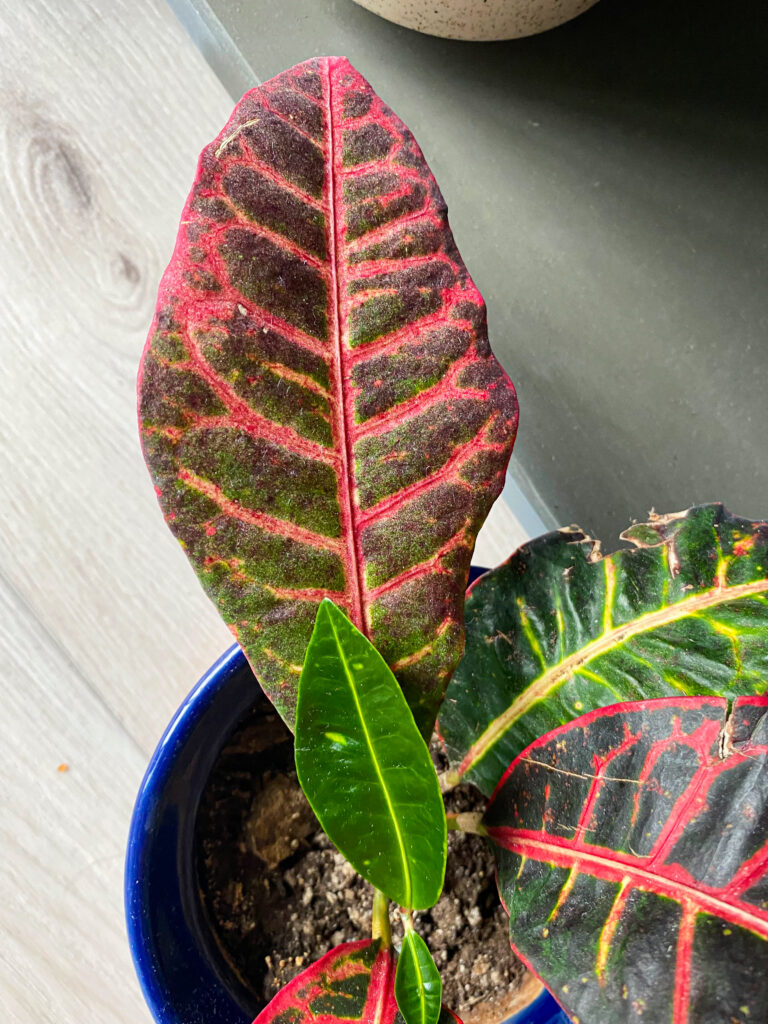
On average, Croton Petra can grow up to 5 feet indoors and up to 8 feet outdoors.
New foliage of Croton Petra grows from the top of its stem and settles in a spiral position.
🌸 Does the Croton Petra Bloom?
This plant can flower in the right conditions, but the flowers are small and inconspicuous.
✂️ How to Propagate Croton Petra?
The easiest way to start a new Croton Petra is by stem cuttings.
Select a health stem with 4-6 leaves and a node, and make a cutting on the stem. Along the stem, make a slanted cut where you would like the new leaves to grow. Make sure the scissors or shears are clean before making any cuts.
For best success, make sure the cutting is between 3-6 inches long.
After you have your cuttings, you can plant them directly in the soil or dip them in rooting hormone before planting them in the soil.
Patience is key with propagation. Give your new plant time to settle into its environment. Once you see new growth, you know your plant is well established.
💧 How Much Water Does the Croton Petra Need?
The Croton Petra likes to be watered when the top quarter is dry. To determine if your plant needs water, you can stick your finger in the soil (1 to 2 inches) and if it is dry, its ready for water!
If you don’t want to get your hands dirty, you can try a moisture meter (I personally have not used one, but I know quite a few people who do, and this one is really highly rated on Amazon).
This plant typically needs to be watered every 3 to 4 days (depending on your environment).
I typically bottom water this plant through the drainage hole of the pot on a tray. It’s the easiest way to know if your plant is thirsty or not. Overwatering can lead to fungus gnats, root rot, or the death of your plant.
You can top water, but it’s best to do so in a pot with drainage until water is flowing out of the hole. If your pot doesn’t have drainage, you might accidentally drown your plant or make some fungus gnats very happy.
You should top water from time to time to make sure any built up minerals can wash through the plant. The water should drip out of the bottom of your drainage hole.
🪳 Pests & Problems 😔
Croton Petra can face the following pests and problems.
🪳 Pests
- Mealy Bugs: these look like little white cotton balls on the plant. You can remove these with your fingers if you catch them early enough, but I would use a cotton swab with a drop of Isopropyl alcohol and try to scrape them off the stem.
- Scale: I’ve never personally had scale (knock on wood) and I am very thankful. Scale are small, brownish, round or oval insects that attach themselves to the leaves or stems of the plant. They are hard to notice as they appear like a growth or bump on the plant. Scale can cause yellowing, wilting, and weakened growth. Removing scale from a plant is tedious, like with mealybugs. You can remove scale by manually removing them with a cotton swab with rubbing alcohol, using insecticidal soap or neem oil.
- Aphids: Aphids are small, insects that cluster under leaves and stems. They can appear white, brown, black, gray, light green or yellow. If you see distortion, wilting or yellowing leaves, this can be a sign of aphids. You should be able to spray them off with a strong stream of water or using insecticidal soap.
- Spider Mites: If spider mites have taken to your plant, spray them with a mixture of neem oil, dish soap and water (or you can buy an insecticidal soap). I repeat this about once or twice a week (depending on the severity of infestation) for about a month. It’s also good to do this preventatively once a month or so. You will know you have spider mites if you see webbing and leaf damage. Learn how to eradicate Spider Mites.
- Whiteflies: These are tiny, white insects that feed on sap and can transmit disease. To treat whiteflies you can prune the affected leaves to reduce the population; use a strong stream of water to dislodge whiteflies; use yellow sticky traps; and/or insecticidal soap (a mixture of neem oil, dish soap and water (or you can buy an insecticidal soap).
😔 Other Common Problems
- Brown, Crispy Leaves or Leaf Drop: This is caused by low humidity. It’s best to use a humidifier to avoid this issue. Leaf drop can also be caused by inadequate light and temperature fluctuations.
- Drooping Leaves: Your plant is likely thirsty. Just give it a little water and it should be as good as new.
- Yellowing Leaves: If you have a new leaf coming in, your plant is likely fine. Plants pull energy from older leaves to support new growth. But it can also indicate over- or under- watering or lighting issues, or too much direct sun.
- Overwatering: Root rot happens from overwatering your plant with insufficient drainage. You can improve the drainage of your plant by ensuring your plant is potted in a planter with a drainage hole and using a well draining soil (something with a decent amount of perlite). You can also end up with fungus gnats or fungal disease from overwatering.
- Underwatering: Signs of underwatering include leaves becoming shrivelled, discoloured or dry.
- Environmental Stress: Croton Petra are sensitive to change in environment. Any sort of stress and it will drop its leaves or diminish growth. One of my friends gave me this plant and one of the leaves dropped during transport to my home.
☢️ Are Croton Petra Toxic?
Croton Petra is toxic to humans and pets if ingested.
Croton Petra Quick Care Guide
| Scientific Name | Codiaeum variegatum ‘Petra’ |
| Nickname | Croton Petra, Golden Petra |
| Origins | Malaysia |
| Light | Bright, medium-bright light preferred, but they can handle indirect light |
| Temperature | 15 to 27 degrees celsius. |
| Humidity | High (60-80%), can tolerate average humidity (40-60%) |
| Height | Up to 5 feet indoors and up to 8 feet outdoors |
| Blooms | Yes |
| Propagate | Stem Cuttings |
| Water Frequency | When top quarter is dry likely every 3-4 days |
| Pests | Mealy Bugs, Aphids, Scale, Spider Mites, Whiteflies |
| Common Problems | Leaf Drop, Leaves Browning or Curling, Yellowing Leaves, Environmental Stress, Nutrient Deficiency, Overwatering (Root Rot), Underwatering] |
| Toxicity | Moderate (not safe when ingested) |
References
Below is a list of external sources I consulted while writing this post. This post is a mixture of my own experiences, and the external sources listed below:
Jomo Studio: Croton Petra
Wikipedia: Croton
A-Z Animals: Croton Magnificent vs. Petra
A-Z Animals: How To Propagate Croton Plants

